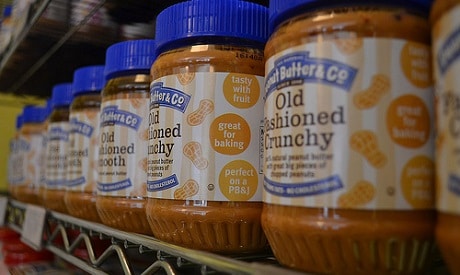
Diagnosing a patient with Alzheimer’s disease requires a full medical examination and a battery of tests that can range from simple blood tests to more extensive brain scans and can take quite some time. The process can be stressful and expensive and cause greater aggravation to an already struggling patient. But new research shows that a simple scoop of peanut butter and a ruler may be able to play a key role in the early diagnosis of those developing Alzheimer’s disease.Read more about Alzheimer's disease
Science Daily reports that researchers at the University of Florida’s McKnight Brain Institute Center for Smell and Taste performed a small pilot study to test for smell sensitivity in patients with cognitive issues because the first cranial nerve is commonly one of the first things affected in cognitive decline and is also associated with the ability to smell. Graduate student Jennifer Stamps who came up with the idea for the study chose peanut butter because it is a “pure odorant” (not detected by anything but the olfactory nerve), inexpensive, and readily available. Their findings were published in the Journal of Neurological Sciences.
In addition to their regular testing, patients sat down with a clinician for the peanut butter scent test. The patients closed their eyes and mouth and blocked one nostril while the clinician opened the jar of peanut butter and held a metric ruler next to the nostril with the patient breathing normally. Using 14 grams of peanut butter, the clinician moved the peanut butter in one centimeter increments along the ruler until the patient could detect the odor upon exhaling. After recording the distance of detection and waiting 90 seconds, the procedure was repeated on the second nostril.
The results showed that those patients who were diagnosed weeks later with Alzheimer’s disease when their other test results came back had had a significant impairment in smell in the left nostril during the peanut butter test. Those patients didn’t detect the odor until it was on average 10 centimeters closer to the nose than when the right nostril was tested. It is believed that the cause of this is the connection between the temporal lobe, one of the first parts of the brain to decline with Alzheimer’s disease and the part of the brain that helps form new memories, and its association with the smell system. Read more about the benefits of peanut butter
While this study was small and will require more research before this research can be used to help predict or diagnose Alzheimer’s disease, it can be used to help confirm the diagnosis.
Stamps says, "At the moment, we can use this test to confirm diagnosis. But we plan to study patients with mild cognitive impairment to see if this test might be used to predict which patients are going to get Alzheimer's disease."
The test may also be a simple and inexpensive way to help those without access to healthcare or more advanced technology.
Photo: vchili


